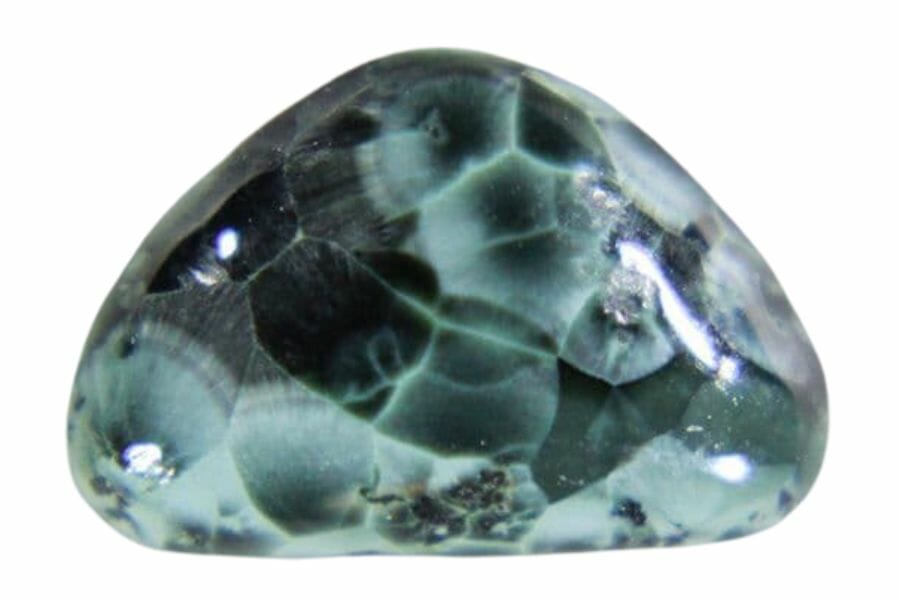Michigan is a treasure trove for rock enthusiasts. From the Upper Peninsula’s mighty cliffs to the Lower Peninsula’s sandy shores, this state is bursting with geological diversity.
Picture yourself holding a piece of Petoskey stone, a fossilized coral that reveals ancient marine life with intricate patterns. It’s like holding history in your hands!
Michigan boasts an incredible variety of minerals, too. Imagine stumbling upon a Lake Superior Agate while strolling along the shores of Lake Michigan. These agates come in a mesmerizing range of colors, from deep reds to vibrant oranges; each is a tiny masterpiece.
So, whether you’re a budding geologist, a curious adventurer, or simply someone who appreciates the wonders of the Earth, Michigan’s rocks, minerals, and gems will captivate your imagination.
Prepare to embark on an enchanting journey through this geological paradise, where nature’s artwork awaits at every turn. Let’s rock and roll, Michigan style!
A List of The Common Rocks, Stones, and Minerals Found in Michigan
Let’s begin by discussing some of the more common rocks and minerals that you can find in the state. Check out the following articles, where we go into much detail if you want a thorough guide:
The Michigan State Rock, Mineral, and Gem
Knowing the official state options is helpful before we get into the specifics:
| Michigan State Rock | Petoskey Stone |
| Michigan State Mineral | Chlorastrolite |
| Michigan State Gem | Isle Royale Greenstone |
Visit the Michigan Department of Natural Resources to learn more about the state’s geology policy.
Always Confirm Access and Collection Rules!
Before heading out to any of the locations on our list you need to confirm access requirements and collection rules for both public and private locations directly with the location. We haven’t personally verified every location and the access requirements and collection rules often change without notice.
Many of the locations we mention will not allow collecting but are still great places for those who love to find beautiful rocks and minerals in the wild without keeping them. We also can’t guarantee you will find anything in these locations since they are constantly changing.
Always get updated information directly from the source ahead of time to ensure responsible rockhounding. If you want even more current options it’s always a good idea to contact local rock and mineral clubs and groups
Calcite
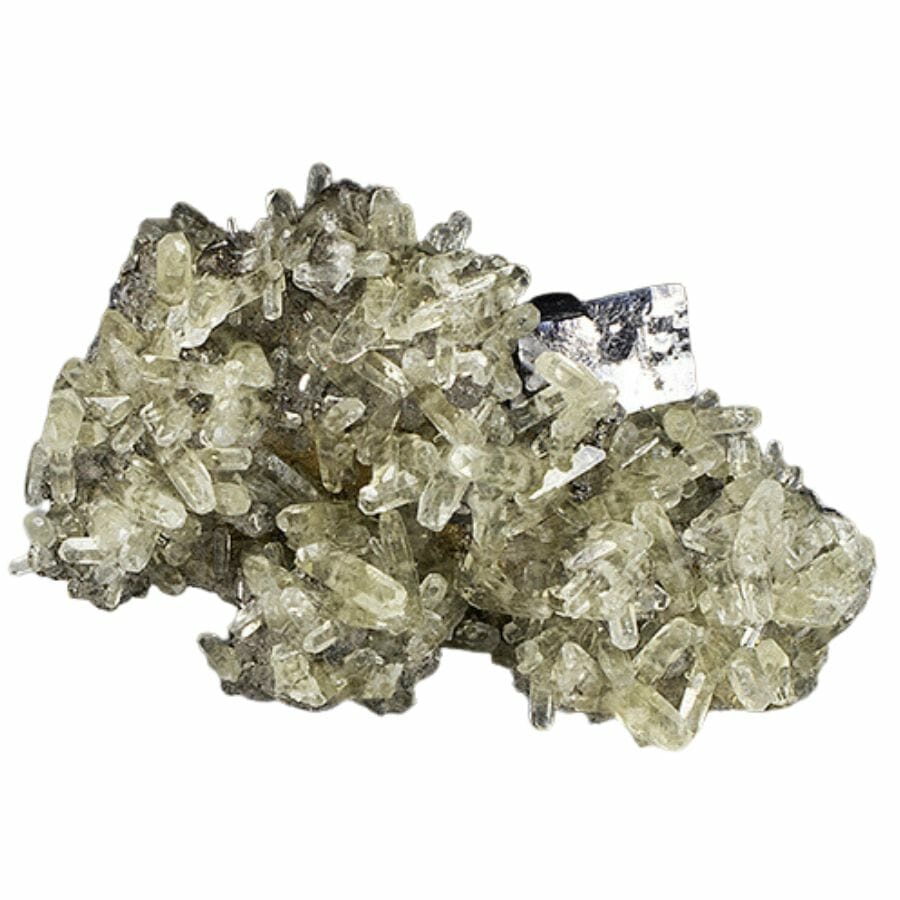
Calcite is a mineral composed primarily of calcium carbonate. It’s one of the most common minerals on Earth and can be found in various fascinating forms. But how does this beautiful mineral come into existence?
It typically forms through precipitation, where dissolved calcium and carbonate ions combine and solidify. It often occurs in sedimentary rocks like limestone, composed mainly of calcite accumulated from the shells of marine organisms over millions of years.
One prominent type in the Great Lakes State is the beautiful Honeycomb Calcite, also known as Amber Calcite. It features intricate patterns resembling honeycombs and can be found in various colors, from creamy whites to warm browns. It’s like holding a piece of natural artwork in your hands!
If you struggle to differentiate calcite from similar rocks and minerals, our expertly crafted guides are here to lend a helping hand, making the identification process a breeze:
Where you can find calcite in Michigan
In Michigan, you can find a variety of calcite formations, including:
- Drummond Island – Upper Peninsula of Drummond
- Houghton – Quincy Mine dump
- Keweenaw Peninsula – Abandoned copper mines and surrounding rock outcrops contain calcite formations.
- Presque Isle – Beach gravels
- Traverse Bay Area – The Traverse Bay region is renowned for its beautiful Sunrise Calcite.
Copper

Copper is formed deep within the Earth through some funky geological processes. It likes to hang out with other minerals and rocks, especially those containing sulfur. The Earth’s crust’s fluids mix with rocks, forming copper.
The Great Lakes State is famous for its copper deposits, especially in the Keweenaw Peninsula. Native copper, which is all pure and metallic, can be found in veins, lodes, and massive deposits.
But why is copper so highly valued? It’s a top-notch conductor of both heat and electricity. That means it’s the life of the party when it comes to electrical wiring, power generation, and all things electronic.
It’s also fantastic at resisting corrosion, like having a built-in shield against rust and wear.
But here’s the best part: copper has hidden superpowers! It naturally fights off germs and keeps things clean. That’s why you’ll spot copper doorknobs and surfaces in fancy places like hospitals.
Where you can find copper in Michigan
Many copper formations can be found in Michigan, including:
- Copper Falls Mine Dumps
- Eagle Harbor – Central Mine
- Greenland – Adventure Mining Company
- Hancock – Arcadian and Quincy Mines area dumps
- Keweenaw Peninsula – Delaware Copper Mine
Datolite
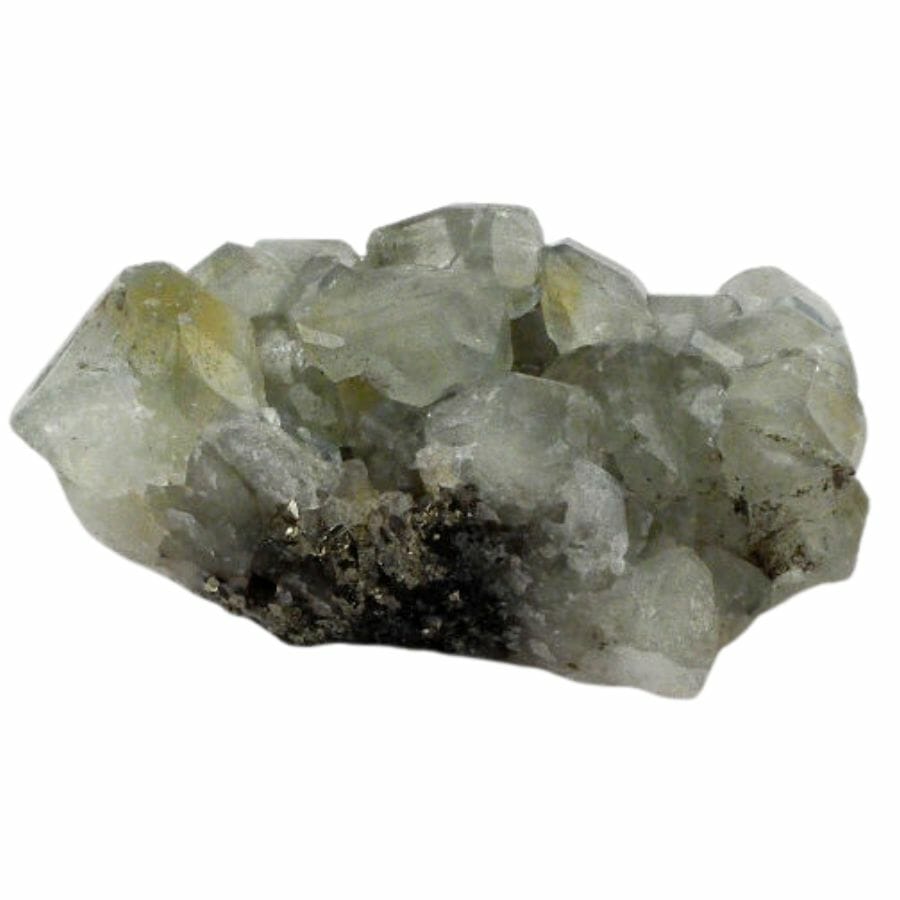
Datolite is like a secret gem hidden within the Earth. It’s a calcium borosilicate mineral that forms in cavities and fractures of rocks. Think of it as nature’s saying, “Let’s fill these spaces with something special!”
What’s remarkable is that it can come in different colors and textures. You might spot it in hues of pink, green, white, or even a mix of colors. It’s like a kaleidoscope of mineral goodness!
It’s cherished for its beauty and is often used in jewelry and decorative pieces. Its vibrant colors and exciting crystal formations make it a true standout.
This rock is also known for its metaphysical properties. Some folks believe it promotes tranquility and positive energy.
Where you can find datolite in Michigan
In Michigan, there are numerous deposits, including these areas:
- Isle Royale
- Keweenaw Peninsula – Phoenix Mine
- Ontonagon County – Nonesuch Mine
Feldspar

When it comes to feldspar, Michigan knows how to impress. In the Upper Peninsula, you’ll find some excellent varieties. One is the beautiful Amazonite, known for its vibrant blue-green color. It’s like a splash of tropical paradise!
The state also contains other feldspar types, like moonstone and labradorite. Moonstone has a mesmerizing play of light, like a celestial dance trapped within the mineral. On the other hand, Labradorite has flashy iridescent colors that give off a cosmic vibe.
It’s used to make glazes and ceramic materials. It gives them strength, stability, and that extra touch of pizzazz. Feldspar is also found in glass manufacturing. It helps to lower the melting point and make the glass more durable.
Where you can find feldspar in Michigan
There are a lot of feldspar in Michigan, notably in these places:
- Isle Royale
- Ontonagon County – White Pine Mine
- Pegmatite deposits at the Huron Mountains
Limestone
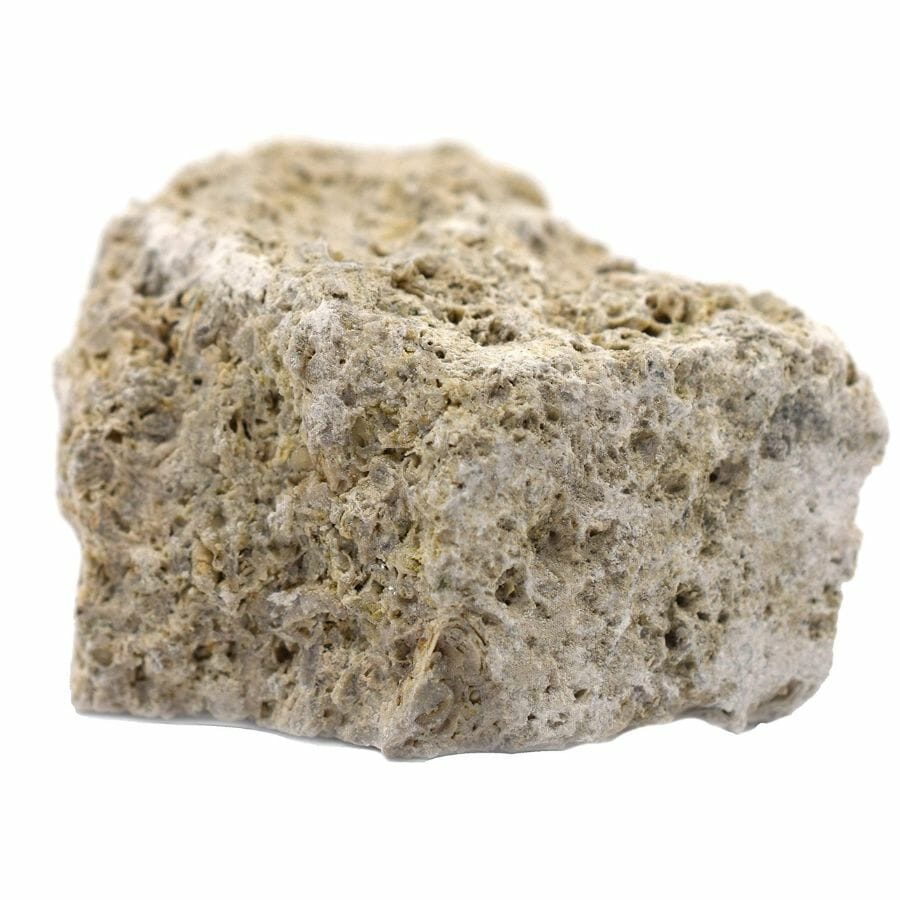
Limestone is formed from the accumulation of tiny particles like shells, coral, and even ancient sea critters. Over millions of years, these tiny creatures pile up and undergo intense pressure, transforming into solid rock.
The state is also home to the gorgeous “Onondaga limestone.” This rock formation has beautiful layers and often contains fossils of ancient sea creatures.
It’s used in construction materials like concrete and mortar. It’s also a key ingredient in making cement, like the glue that holds buildings together. Limestone is even used in agriculture to balance soil pH and provide essential nutrients for plants.
The best thing is that limestone formations result in breathtaking landscapes. Think about stunning caves, majestic cliffs, and picturesque waterfalls. It can shape the environment and create wonders!
Where you can find limestone in Michigan
In Michigan, there is a lot of limestone, especially in these locations:
- Along the shores of Lake Huron
- Drummond Island
- Mackinac Island – Arch Rock
- Sleeping Bear Dunes National Lakeshore
- Western Lower Peninsula – Lake Michigan
Thomsonite
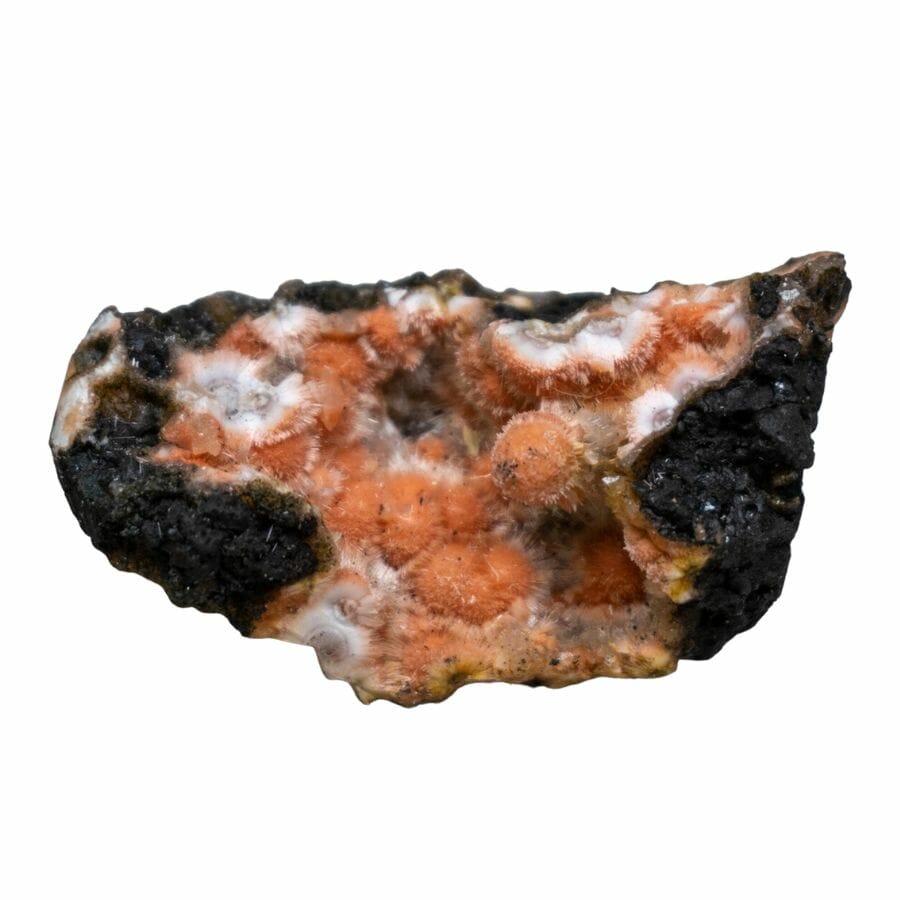
Thomsonite is a zeolite family member known for its captivating crystal formations. Imagine hot volcanic activity with lava flowing and cooling down. It forms in cavities and fractures in those intense moments, creating stunning crystals.
In the Upper Peninsula, you’ll find some unique specimens. One type is the “thomsonite with thomsonite” – yes, you heard that right! It’s a phenomenon where thomsonite crystals are beautifully lined up within larger thomsonite crystals.
It showcases beautiful colors like green, pink, and even orange. Its eye-catching crystal formations make it a gem for collectors and enthusiasts. It’s also believed to have some metaphysical properties. Some folks think it promotes harmony, creativity, and positive vibes.
Whether you stumble upon a thomsonite crystal or admire its mesmerizing colors, remember its volcanic origins and appreciate its natural beauty.
Where you can find thomsonite in Michigan
There are many thomsonites in Michigan, particularly in these areas:
- Copper Harbor
- Isle Royale
- Upper Peninsula – Grand Marais
The Gemstones Found In Michigan
Now let’s dive in deeper and talk about the gemstones found in Michigan. If you want a comprehensive guide, we’ve also listed the articles we created in great detail:
Isle Royale Greenstone
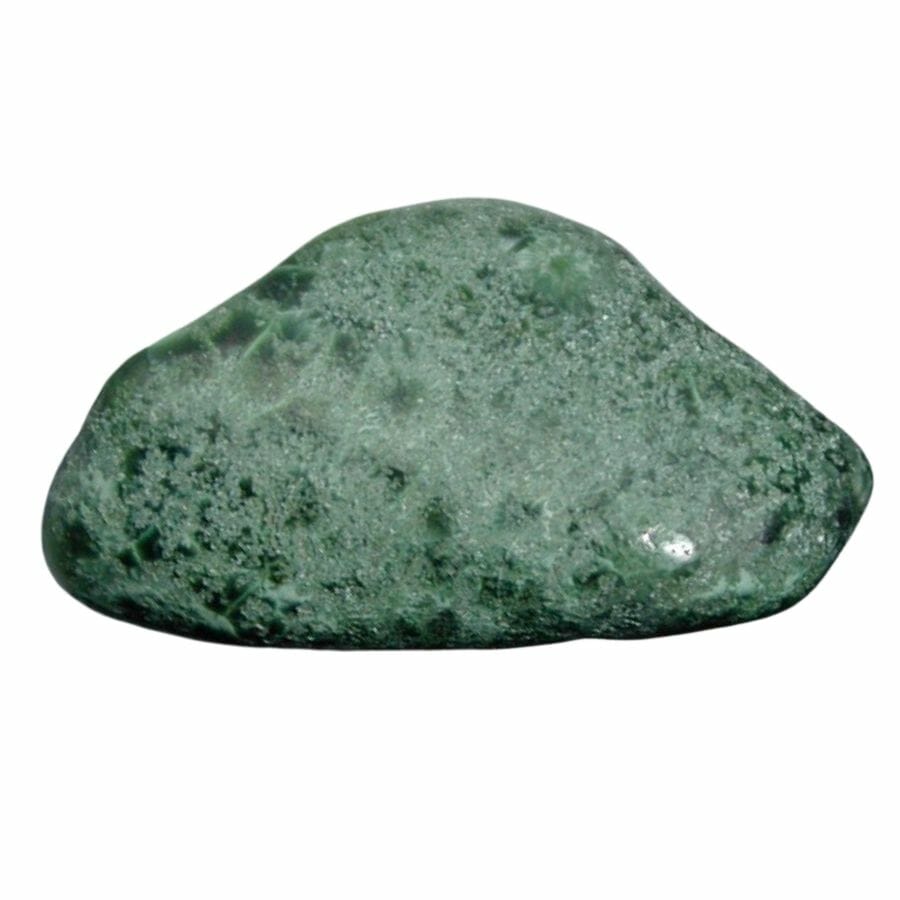
Isle Royale Greenstone is forged through volcanic action and ancient geological forces. It forms when hot lava erupts, flows over land, cools, and solidifies.
It’s named after the primary location where you would find it, the Isle Royale National Park. This magical island in Lake Superior is known for its mesmerizing green rocks. You’ll find variations these, each with style and charm.
Isle Royale Greenstone is valued because of its beauty and rarity. Its unique patterns make each piece one-of-a-kind. It’s like carrying a piece of Michigan’s natural history with you!
Where you can find Isle Royale Greenstone in Michigan
Throughout Michigan, particularly in these places, you can find lots of Isle Royale Greenstone:
- Isle Royale
- Siskiwit Lake
Agate
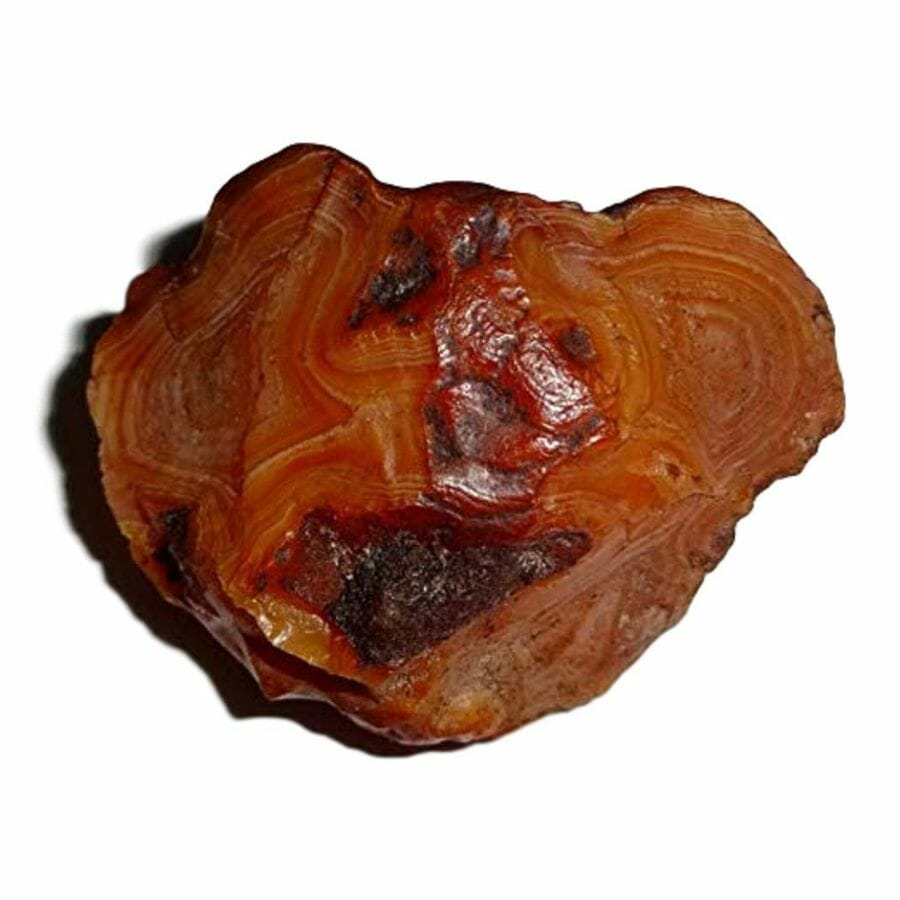
Agate is a type of chalcedony, a form of quartz, and it’s formed in cavities and fractures within volcanic rocks. Imagine hot lava flowing and then cooling down over time. As it cools, pockets are formed, and that’s where agate comes in!
Water percolates through these pockets, carrying minerals along the way. Layer by layer, these minerals deposit and create the beautiful patterns we see in agate.
Michigan is famous for its abundant agates, especially along the Lake Superior shoreline and Upper Peninsula. You’ll find different types that will blow your mind; some of these agates can be worth money!
One famous variety is the legendary “Lake Superior Agate.” These beauties have many colors, from vibrant reds and oranges to earthy browns and even mesmerizing blue tones. The patterns within Lake Superior Agates are like miniature works of art, with swirling bands and intricate designs.
This gem is also used for jewelry and decorative purposes. From stunning necklaces and earrings to eye-catching bookends and coasters, agate adds a touch of natural beauty to our lives.
Where you can find agate in Michigan
Agate is widespread in Michigan, especially in these locations:
- Isle Royale
- Siskiwit Lake
Amethyst
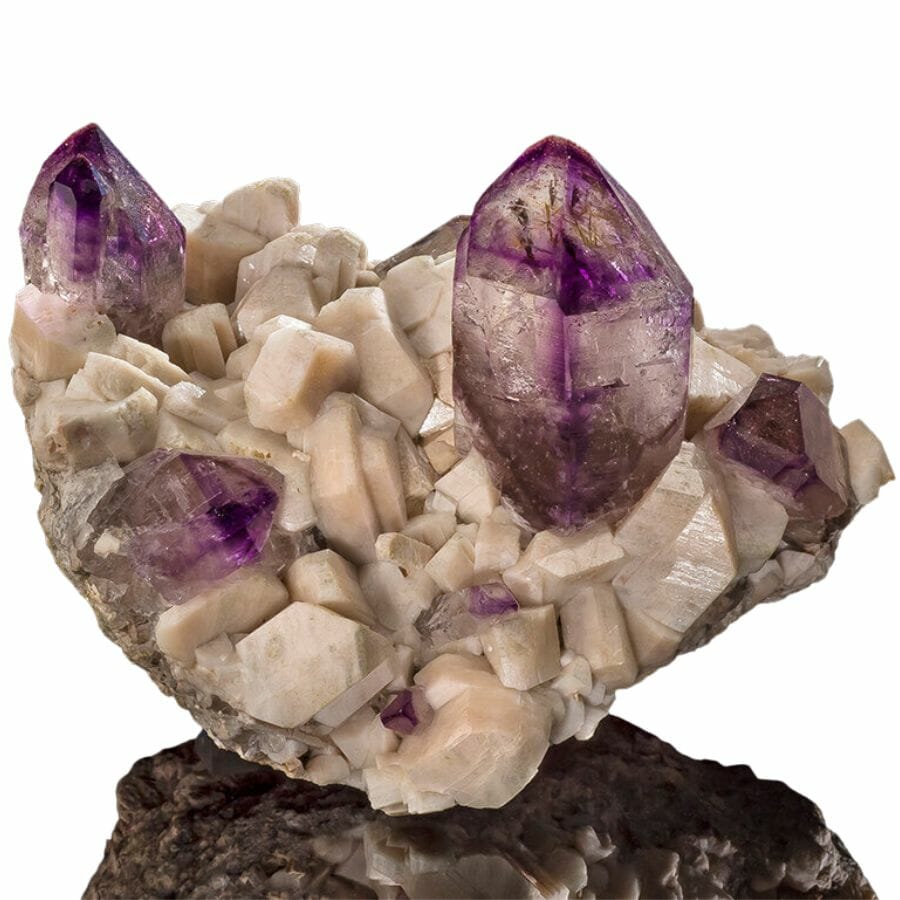
Amethyst is the royalty of gemstones, renowned for its stunning purple hues. But did you know it’s a type of quartz?
You’ll find different varieties of amethyst in Michigan, each with its style. These beauties have a gorgeous deep purple hue, like a regal gem fit for a queen. It’s like holding a piece of royalty in your hand!
But why do people value amethyst so much? Well, it’s not just about its stunning looks. Amethyst has been cherished for centuries for its spiritual and healing properties. Some folks believe it brings calmness, clarity, and positive vibes.
Amethyst is also used in jewelry, from dazzling rings to elegant pendants. Its rich purple color adds a touch of elegance and sophistication to any ensemble.
Next time you encounter an amethyst crystal or admire amethyst jewelry, remember its journey from deep within the Earth and embrace its regal beauty. Amethyst is a gem that can steal the show and bring a touch of purple magic to our lives!
Where you can find amethyst in Michigan
We’ve put together a full guide to finding amethyst in Michigan here but you can start with the following areas:
- Agate Falls Scenic Site
- Iron River – Quartzite Mountain
- Lake Superior – Seven Mile Point
- Porcupine Mountains
Carnelian
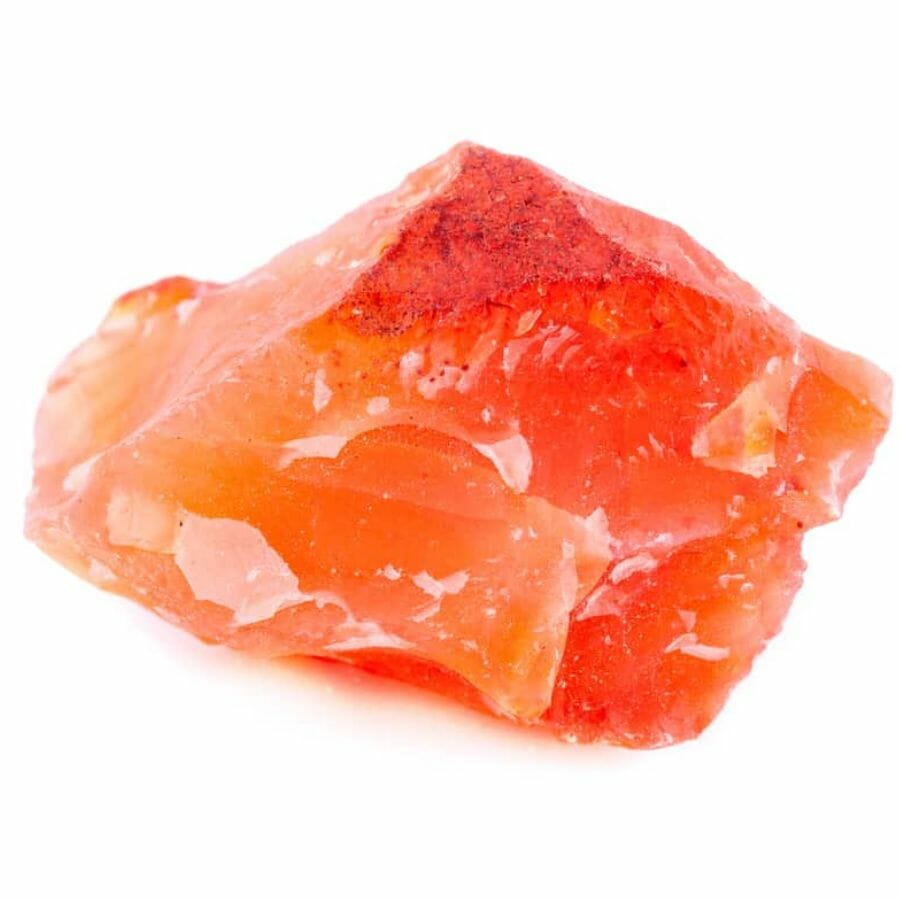
Carnelian is like a burst of sunshine in the gemstone family. It’s a variety of chalcedony, which is a type of quartz. But it isn’t just any quartz. It’s got a distinct orange-to-reddish-brown color that separates it from the group.
You’ll find these treasures along Lake Superior’s shores and various areas of the Upper Peninsula. Some carnelians have unique patterns and inclusions, like swirling bands or small fossilized remains.
It has been cherished for ages for its metaphysical properties. Some folks believe it brings courage and motivation and even boosts creativity.
This gem is also used in jewelry, from stunning necklaces to eye-catching bracelets. Its warm tones add a touch of fiery elegance to any outfit.
When you come across a carnelian gem or admire carnelian jewelry, remember its volcanic origins and embrace its vibrant beauty. Its a gem that knows how to set your soul ablaze!
Don’t let the similarities fool you! Our meticulously crafted guides are here to help you distinguish carnelian from other rocks and minerals:
Where you can find carnelian in Michigan
Carnelian is abundant in Michigan, especially in the places listed below:
- Blake Point
- Carnelian Beach
Chalcedony
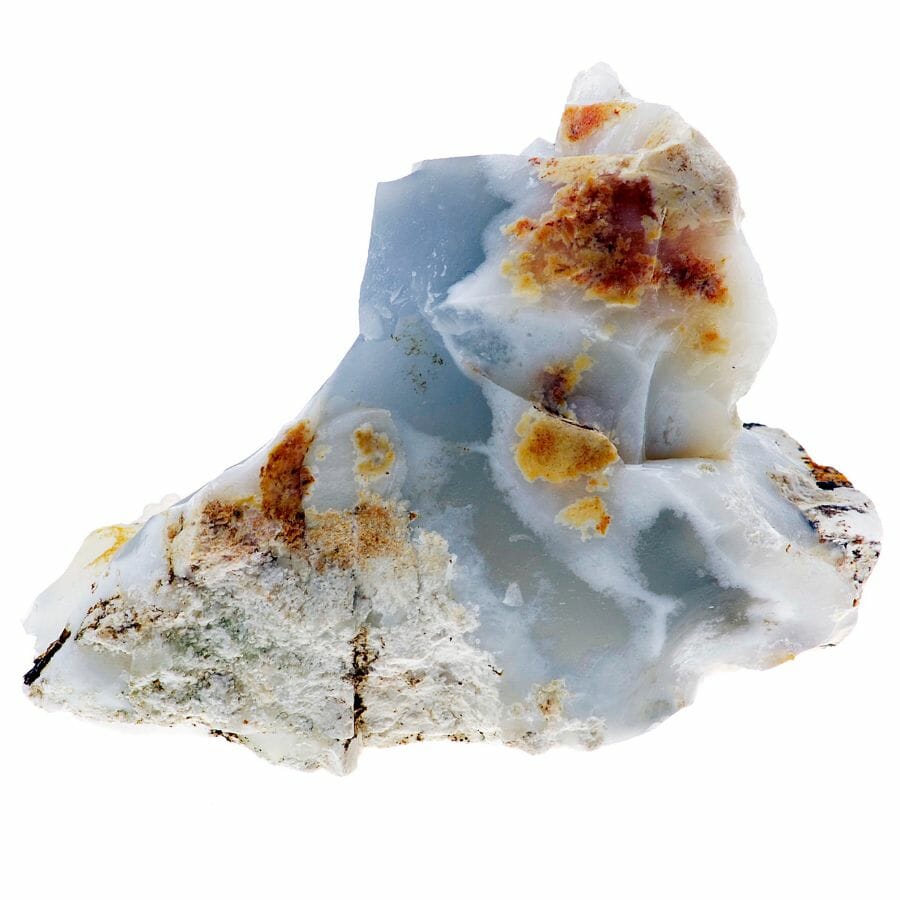
Chalcedony is a gemstone rainbow, offering a spectrum of colors and patterns. It’s a variety of microcrystalline quartz, which means it’s made up of tiny crystals that give it a unique charm. Think of it as nature’s intricate artwork!
It forms in the cavities and fractures of rocks as hot mineral-rich fluids flow through them. These fluids deposit layers of silica, building up over time and creating the mesmerizing beauty of chalcedony.
It’s a valuable stone for making jewelry and other things. Its many colors and patterns make it a versatile material for artists to make beautiful things.
It has quite the beauty that works well in both modern and traditional designs, from cabochons that have been polished to cameos that have been carefully carved.
Chalcedony’s beauty lasts forever, and it has a natural charm that makes it a gem worth finding and keeping.
Where you can find chalcedony in Michigan
There is a lot of chalcedony in Michigan, especially in the following places:
- Ahmeek beaches
- Grand Maris
- Keweenaw Point local beach gravels
- Marquette County – Michigamme Mine
- McClain State Park beaches
Diamond
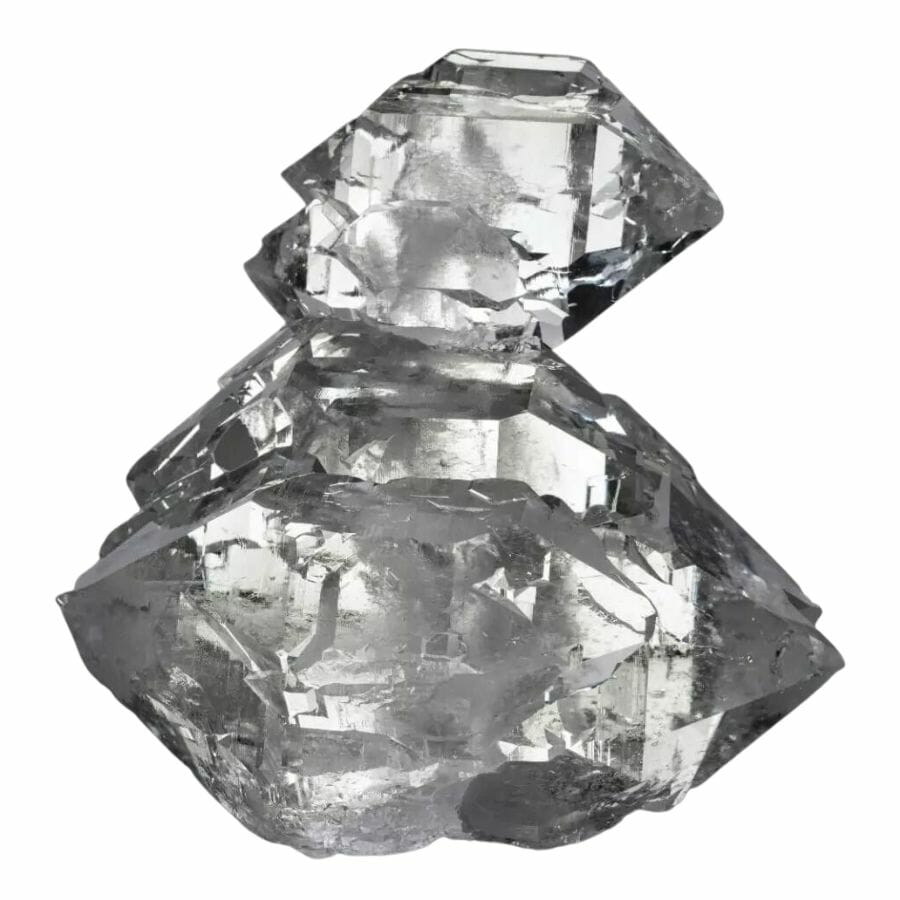
Diamonds are the most valuable and beautiful gem in nature. Their extraordinary beauty and brilliance make them hard to resist. They are made deep in the Earth’s mantle, with high temperatures and pressure.
They are made of carbon atoms that are arranged in a crystal lattice. This makes them the hardest natural substance that we know of.
Diamonds are formed through a process that takes millions or even billions of years. It starts 90 to 120 miles below the Earth’s surface.
Carbon-rich materials like organic matter or graphite are heated and pressed very hard. These intense conditions make the carbon atoms bond uniquely.
In Michigan, diamonds can be found in the glacial deposits of the Upper Peninsula. These diamonds are of the variety known as “Yooperlites.” Unlike traditional diamonds, they are not formed through the same geological processes.
These gems have been admired throughout history and in many different cultures. They are hard to find, last long, and mean something special. They’ve become a sign of love, wealth, and power that will never go out of style.
On top of that, diamonds can be used for more than just decoration. They’re great for industrial tasks like cutting, grinding, and drilling. They’re used in many fields, such as mining, construction, and making precise instruments.
Where you can find diamonds in Michigan
Diamond is common in Michigan, especially in the places below:
- Dowagiac stream gravels
- La Grange – Cook Lake
Garnet
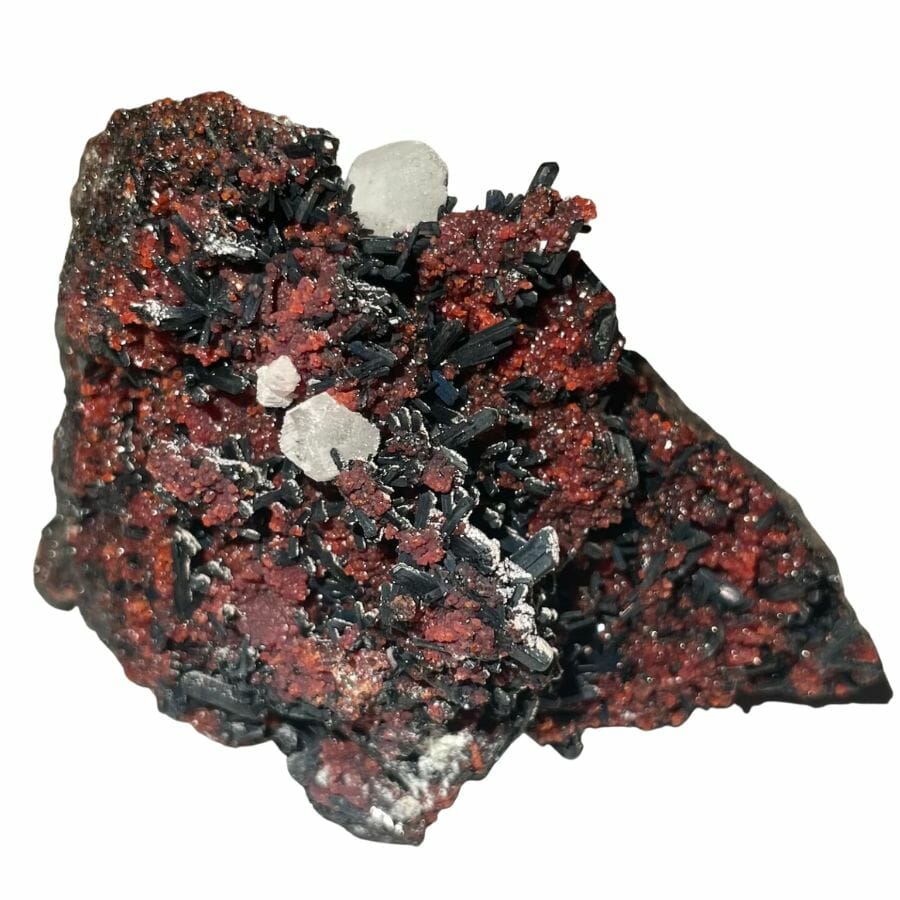
Garnet is a beautiful gemstone known for its rich colors and many different kinds. It’s often found in shades of deep red but can also be green, orange, brown, or even colorless.
It’s made from igneous and metamorphic rocks deep inside the Earth’s crust. Its beauty and importance have been loved for centuries because of its usefulness.
The gemstone’s bright colors and high shine make it a popular choice for jewelry. It’s often used as a primary stone or as a stone to draw attention to another stone. It has a high refractive index, meaning that it can shine brightly when cut and polished well.
Where you can find garnet in Michigan
In Michigan, garnet is prevalent, notably in the following locations:
- Ironwood area – Gogebic Range
- Marquette County – Mt. Shasta
Jasper
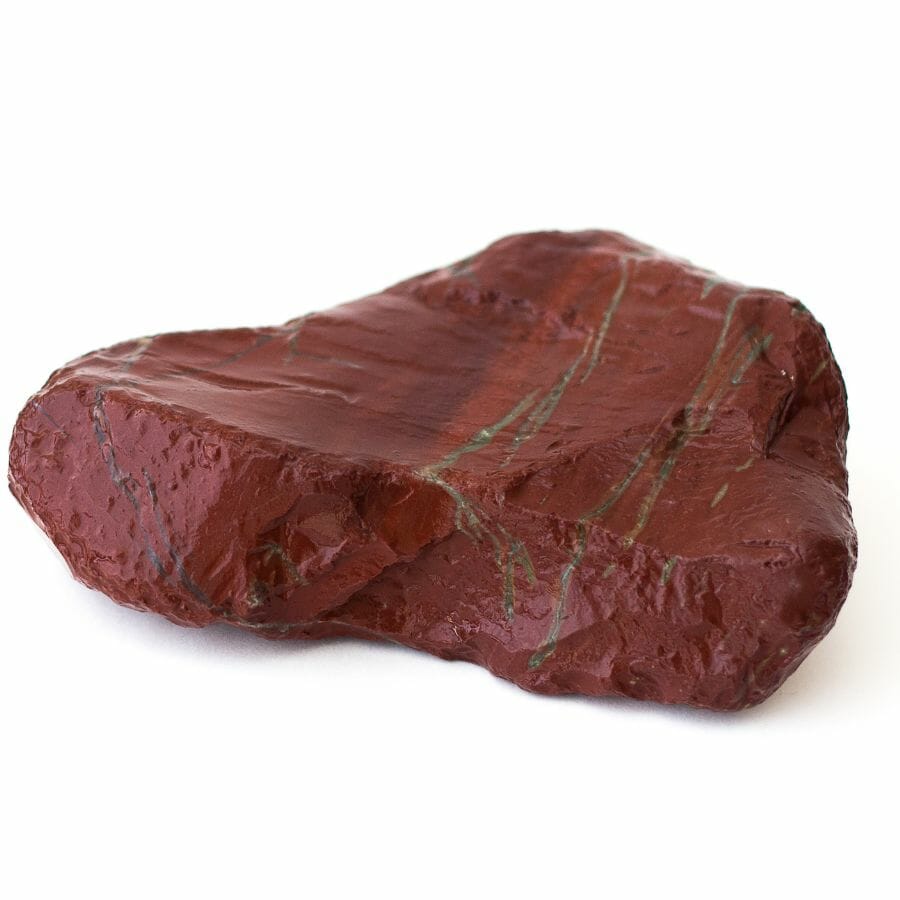
Jasper is a beautiful gemstone known for its unique colors and patterns. It’s made of tiny pieces of silica and is in the same family as quartz. The process by which they are made is called silicification.
Most of the time, jasper is made in sedimentary or volcanic settings. During silicification, different minerals and other impurities can change the colors and patterns of the gem. Because of these imperfections, the color of the glass can be red, brown, yellow, green, or even blue.
It has a lot of value in jewelry and gemstones for several reasons. First of all, its beautiful colors and patterns make it a popular choice for decorations.
This gem is often used to make beautiful cabochons, beads, and carvings for jewelry and other decorative items. Because it comes in many colors and patterns, it can be used to make unique and useful designs.
It’s famous because it lasts long and is easy to find. It’s a hard stone that can stand up to daily wear so it can be used in many kinds of jewelry. It can be found in many places in Michigan so that people who like gems and people who make jewelry can always get them.
Where you can find jasper in Michigan
There’s a lot of jasper in Michigan, especially in the following places:
- Jasper Hill
- Lake Shaft
- Lake Superior beach gravels
- McClain State Park beaches
Quartz
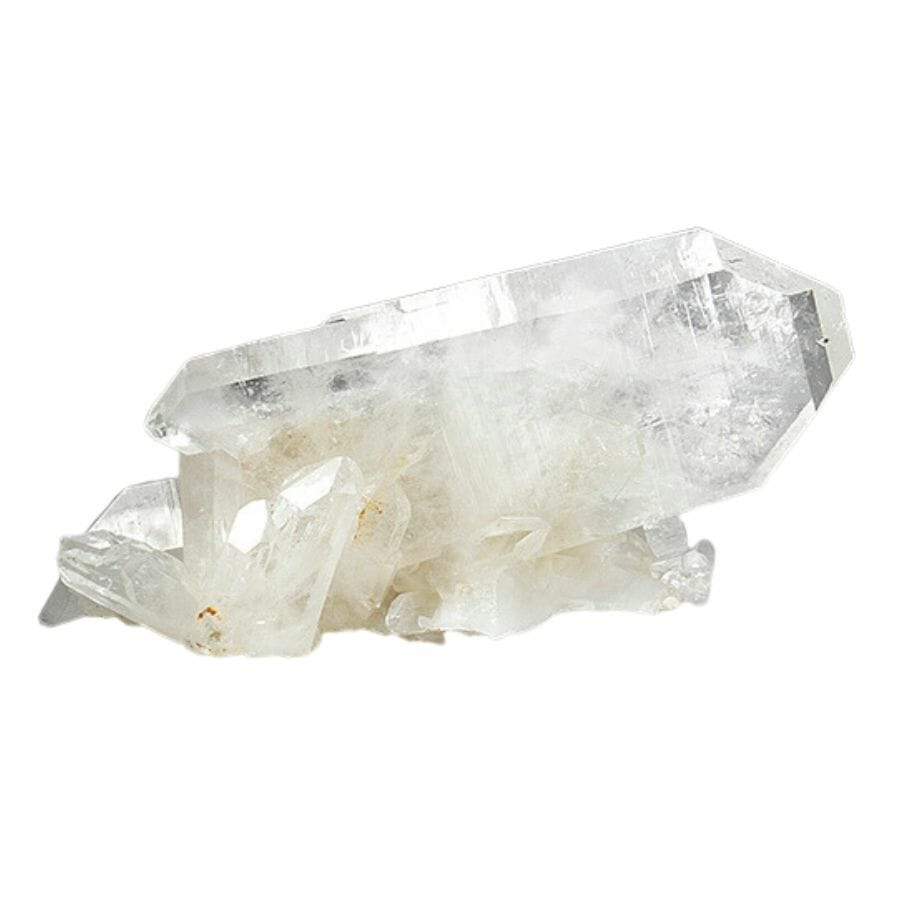
Quartz comes from a combination of geological processes. It usually comes from hydrothermal veins, where hot, mineral-rich fluids flow into rock cracks and cavities.
It’s highly valued for how it looks, how long it lasts, and how useful it is. It’s the most versatile stone in the jewelry and gemstone industries. They can be made into rings, necklaces, and earrings, among other jewelry.
There are many different quartz colors, from clear to smoky to bright amethyst.
These gems aren’t just used for decorations and have important industrial uses. It can withstand heat and chemicals and is very hard, so it’s perfect for use in electronics, watches, and instruments that must be very accurate. Quartz is also essential to making glass, ceramics, and silicon used in semiconductors.
Where you can find quartz in Michigan
Michigan has a lot of quartz, especially in the following places:
- Carnelian Beach
- Siskiwit Bay
- Tobin Harbor islands and shores
- Western Lower Peninsula – Lake Michigan shoreline
Sapphire
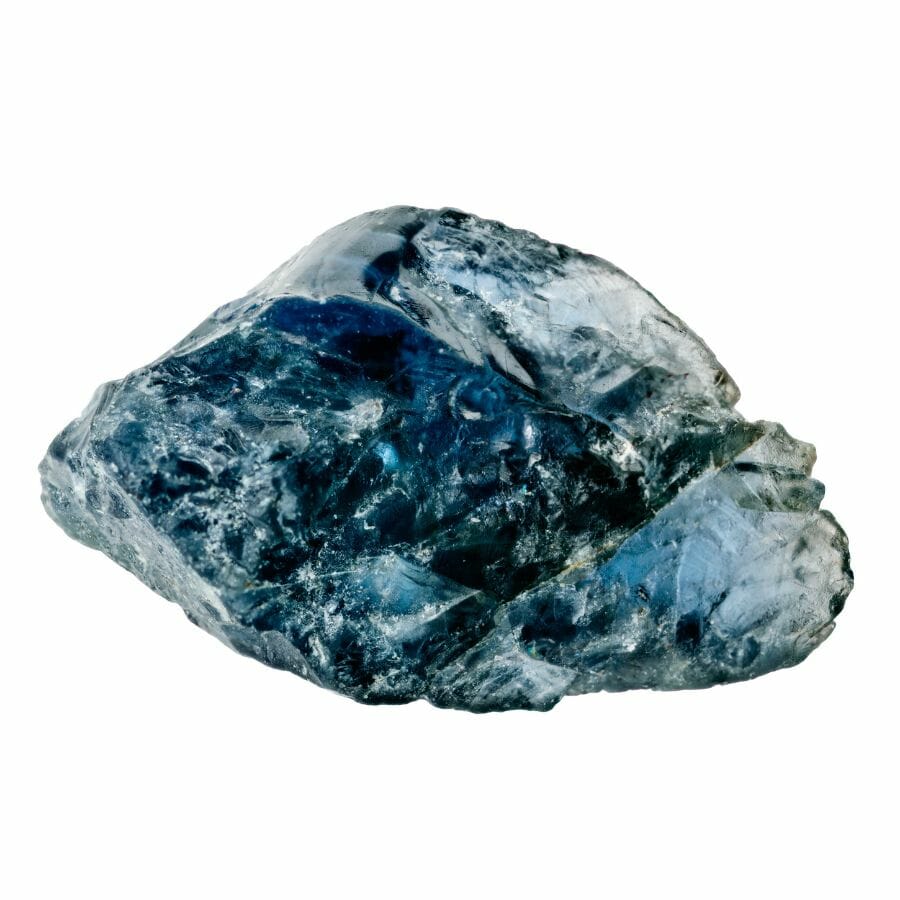
Sapphires usually form in places where metamorphic and igneous rocks are found. The process starts when aluminum and oxygen-rich fluids in the Earth’s crust react.
There are many exciting colors, such as blue, green, yellow, and purple. The area is known for its unique deposits, particularly in the Upper Peninsula.
Most of the sapphires found in Michigan are smaller, but they have a charming look. Collectors and people who like to work with stones like them because they are rare and are significant locally.
Sapphires are very valuable because of how beautiful they are, how hard they are (second to diamonds), and how long they last. Throughout history, the deep blue sapphire has been seen as a sign of royalty, wisdom, and divine protection.
Mistaking sapphire for other rocks and minerals is a common pitfall, but worry not! Our comprehensive guides are here to guide you through telling sapphire apart from its counterparts.
Where you can find sapphire in Michigan
Sapphire is abundant in Michigan, particularly in the following places:
- Champion Mine dumps
The Crystals Found In Michigan
In Michigan, you can find many beautiful crystals that collectors and fans value very highly. We’ve listed these crystals below in great detail.
Check out our article about where to find crystals in Michigan here:
Celestite
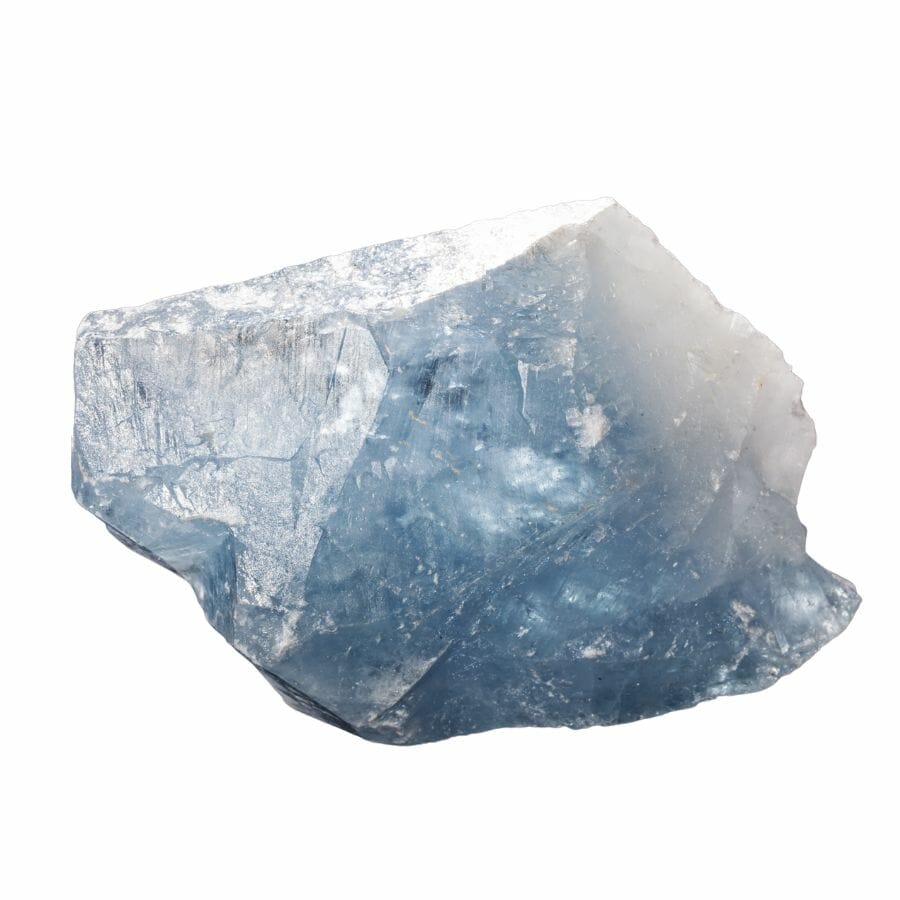
Celestite is highly valued for how it looks and what it can do. Its soft blue color, which looks like the sky, makes you feel calm and peaceful.
Many people think these gems have a calming effect, making relaxing and feeling at peace easier. It’s often used in spiritual rituals and meditation to connect with higher realms and make it easier to talk to divine energies.
Celestite’s value is also affected because it’s hard to find and can be collected. Mineral collectors want to get their hands on beautiful specimens with well-formed crystals. It’s often used to make decorations, jewelry, or tools that help people with their spiritual lives.
Where you can find celestite in Michigan
Celestite is easy to find in Michigan, especially in these places:
- Alpena – shores of Lake Huron
- Maybee – Scoffield Quarry
- Oceana County – Claybanks Township
Epidote
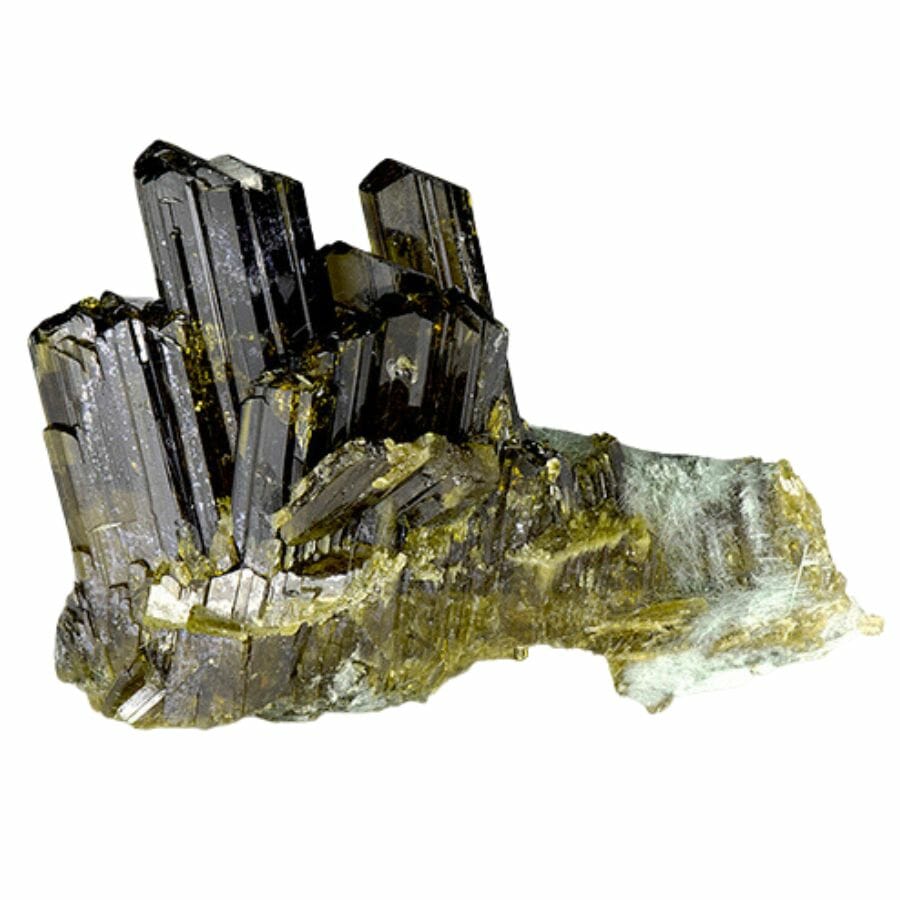
Epidotes usually form where rocks have been changed, especially with rocks like schist, gneiss, and quartzite. The different colors and shapes are caused by the different chemicals that comprise it and the different conditions it was in when it formed.
It has interesting crystal structures and a shiny look. Mineralogists admire and value well-formed crystals because of their beautiful color and shine. They’re often displayed in museums, used in educational settings, or made into lovely things.
Where you can find epidote in Michigan
In Michigan, it’s simple to locate epidote, especially in these locations:
- Marquette county – Ishpeming area
- Upper Peninsula – Ontonagon County
Fluorite
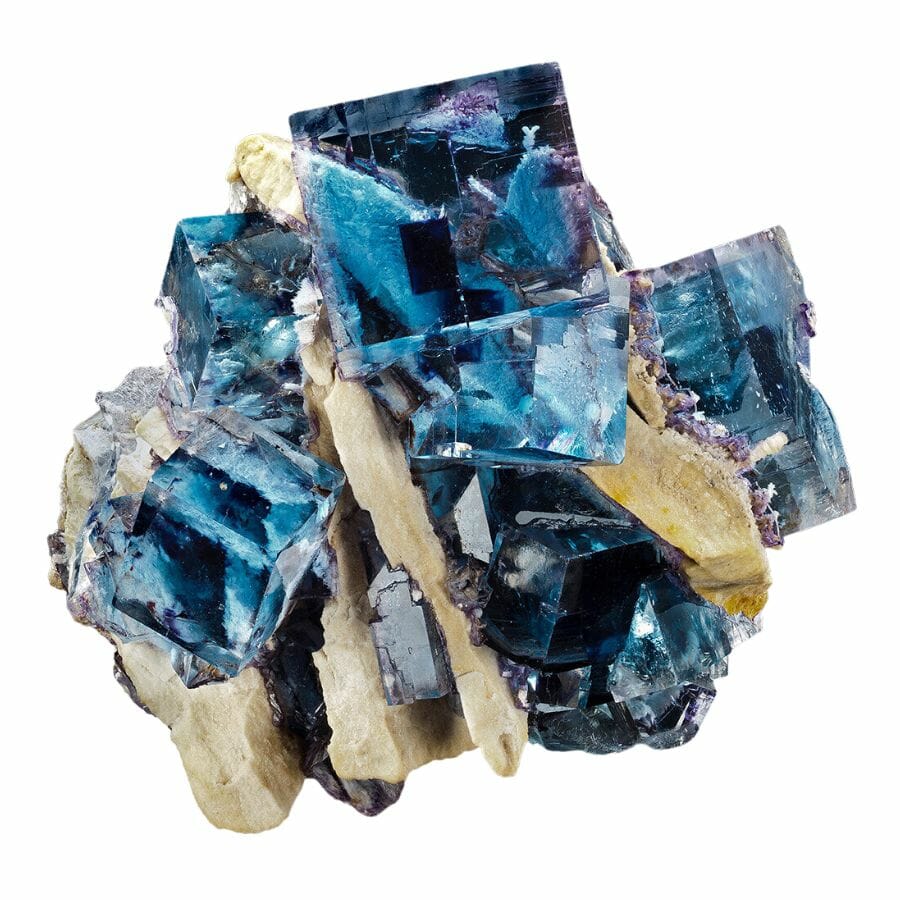
Fluorite, or fluorspar, is an exciting mineral with an excellent range of colors. It’s made of calcium fluoride and is in a group of minerals called halides. Its mineral forms in hydrothermal veins and is known for its beautiful crystals and bright colors.
This gem is highly valued for how it looks, how rare, and what it can do for you. Its bright colors and unique crystal shapes make it a mineral that collectors and people who work with stones want. Fluorite is often made into jewelry, carved into decorations, or put on display.
Where you can find fluorite in Michigan
In Michigan, it’s simple to locate epidote, especially in these locations:
- Randville – Metro-nite quarry
Hematite
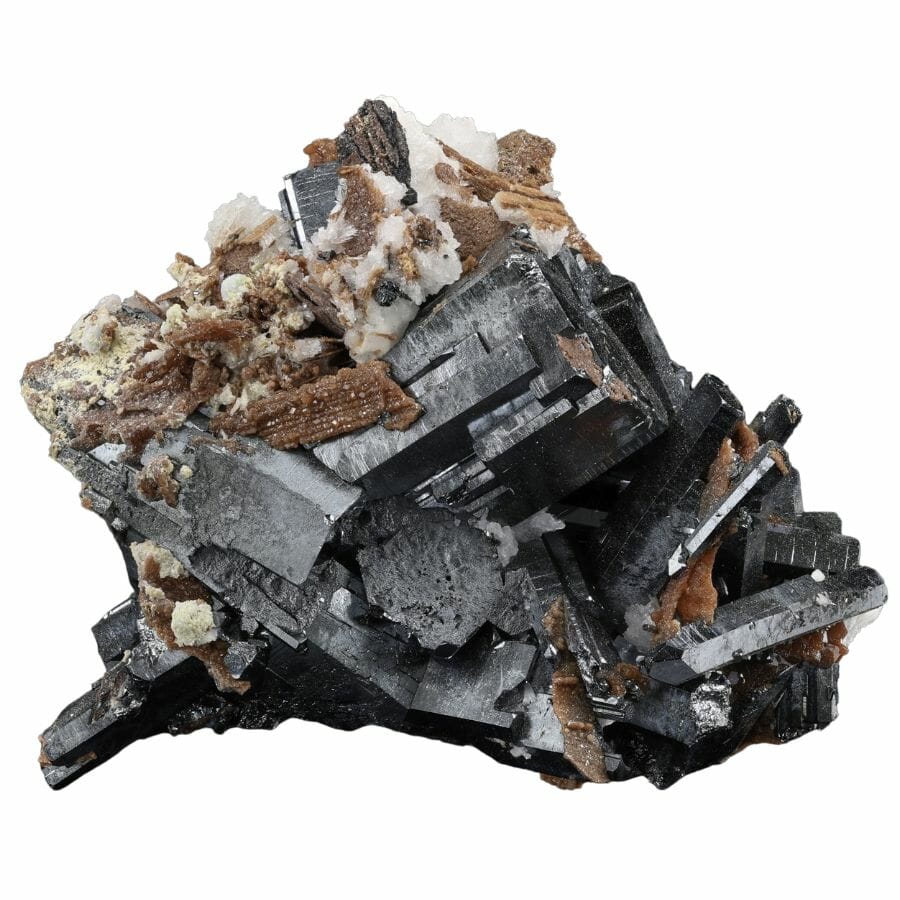
Hematite is a fascinating mineral known for its metallic shine and deep red-to-black color. It’s one of the most common minerals on Earth.
Hematite can form in several ways, such as when water drops out of a solution, when other iron-containing minerals are changed, or when a volcano erupts.
Because it has a lot of iron, hematite is used in many industries. A large amount of iron ore is used to make steel and other metal alloys. That hematite is magnetic makes it helpful in making magnetic recording media.
It attracts people from many fields because of its beauty, metaphysical properties, and its uses in the industry. It’s valued for its metallic shine in jewelry, sought after for its ability to boost energy, and used to make steel.
Where you can find hematite in Michigan
Locating hematite is not tricky in Michigan, particularly in the following areas:
- Champion Mine dumps
- Ishpeming City – The Empire Mine
- Jasper Hill
- Marquette County – Marquette Iron Range
- Negaunee – Jackson Mine
Pyrite
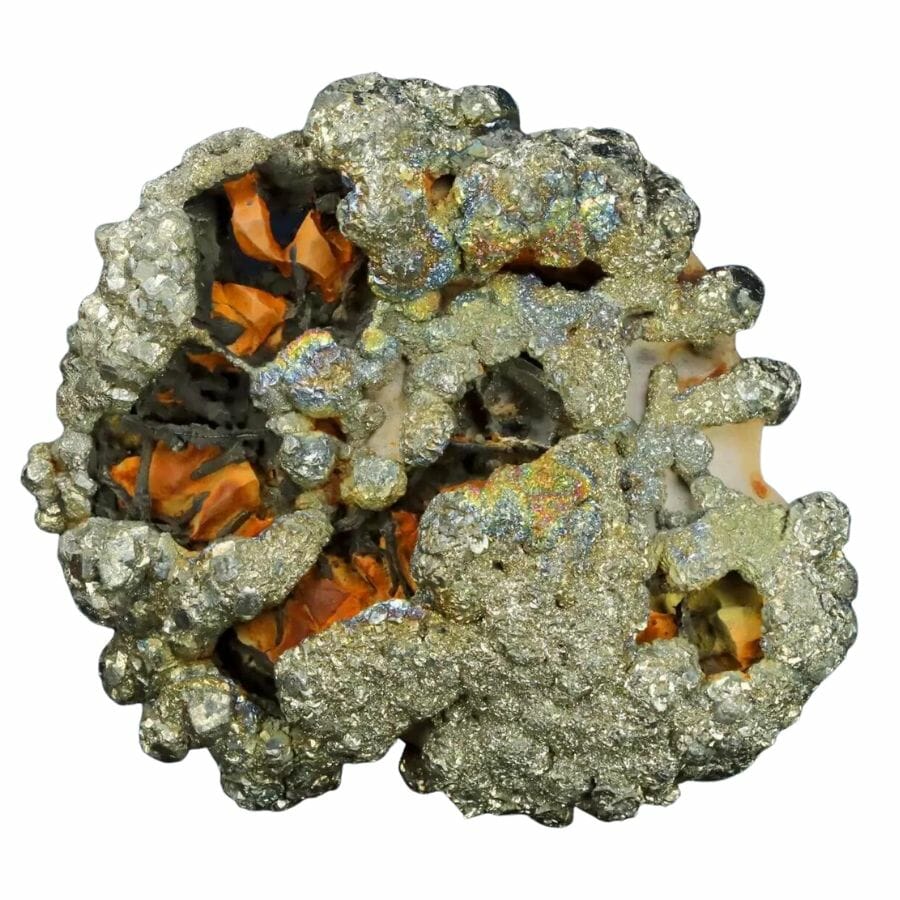
Pyrite, also known as “fool’s gold,” is an exciting mineral that looks like gold but has a unique appeal. It’s a mineral of iron sulfide and is one of Earth’s most common sulfide minerals.
Hydrothermal and sedimentary processes make pyrite, and are often found with other minerals like quartz and calcite.
One type that stands out is “Navajn Pyrite,” which has unique cubic crystals that shine brightly like metal. Collectors want these because they are of such high quality and look so attractive.
Knowing that this mineral can oxidize and turn into sulfuric acid near water is important. This causes it to rust and deteriorate. So, pyrite specimens must be handled and cared for correctly to maintain their appearance.
Where you can find pyrite in Michigan
Finding pyrite is not difficult in Michigan, especially in these locations:
- Dickinson County – Vulcan Mine
- Marquette Iron Range
- Randville – Metro-nite quarry
- Rockport Recreation Area
- Rope Mine
The Most Valuable Rocks and Minerals in Michigan
Let’s now discuss the rocks that everyone is obsessed with. These are the rocks and minerals that, if discovered, can help you increase your income:
Chlorastrolite
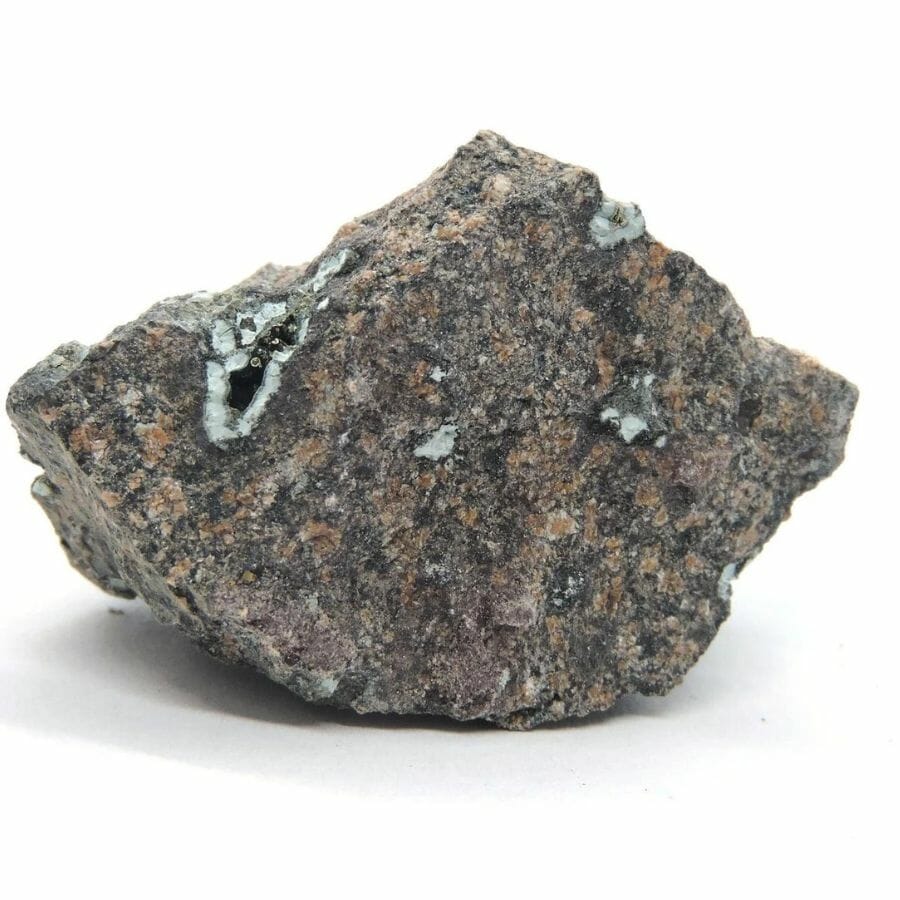
Chlorastrolite is a fascinating gemstone with an unmistakable green hue and attractive patterns. It’s a metamorphic rock frequently found with basaltic lava flows and volcanic rocks.
It’s usually discovered in Michigan near Lake Superior’s shoreline, particularly in the Keweenaw Peninsula. The gemstone is well-known for its distinctive “turtleback” patterns, represented by rounded shapes resembling turtle shells or underwater landscapes.
Because of its scarcity, distinctive appearance, and local significance, chlorastrolite is highly prized. It’s now a treasured gemstone in Michigan and holds cultural and historical importance to the region. Many consider it as Michigan’s state gemstone.
Where you can find chlorastrolite in Michigan
There are several locations where you can find chlorastrolite, but among the top choices are:
- Quincy Mine dump
- Siskiwit Lake
Petoskey Stone
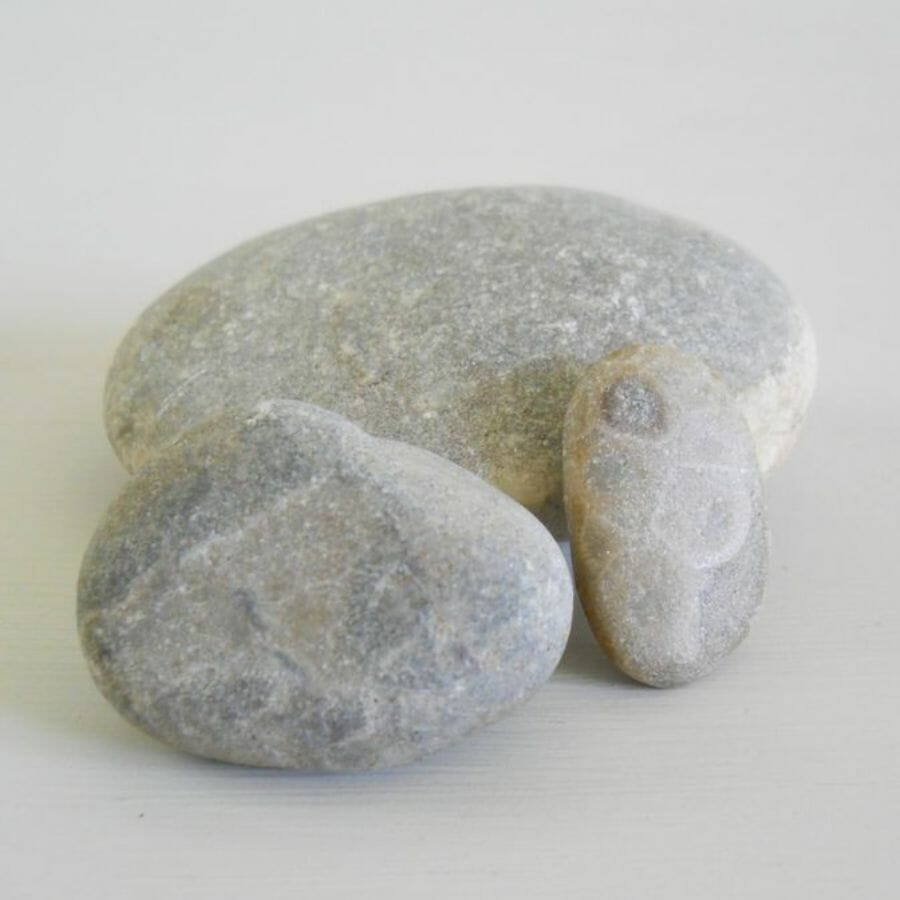
The Petoskey stone is a fossilized coral found only in the Great Lakes region. It bears the name of Petoskey, Michigan, the location of its initial discovery. The stones were once ancient coral colonies in the shallow water that covered the region 350 million years ago, during the Devonion era.
They started to form when coral colonies grew on the seabed of the past. Over millions of years, layers of sediment built up on the coral remains, protecting them.
Pressure and geological processes turned the coral into fossilized limestone with distinct hexagonal patterns called “honeycomb” or “sunburst” designs. When you polish or wet the stones, you can see these patterns.
Different kinds of Petoskey stones can be told apart by their color and pattern. The traditional ones have intricate honeycomb patterns and is a light gray to beige. Ones with darker brown or black patterns are sometimes called “moss” or “snowflake” stones.
Where you can find Petoskey stones in Michigan
You can find Petoskey stone in some places, but some of the best ones are:
- Charlevoix area gravel pits
- Petoskey regional quarries
- Shorelines of Manistee River
- Torch Lake shores
- Traverse City area
How to Identify The Rocks and Minerals You Find
Identifying rocks and minerals is essential for many reasons. It helps us learn about the geological history of a place, figure out how valuable mineral deposits might be, and appreciate the beauty and diversity of Earth’s treasures.
But it can be hard to tell what a mineral is because there are so many of them and their properties are different. It takes careful observation, knowledge of how minerals are made, access to good resources, and sometimes testing equipment that isn’t common.
Even geologists and mineral collectors with a lot of experience have trouble telling the difference between rocks and minerals that look the same. This shows how complicated and ever-changing the field of mineral identification is.
Examine its color
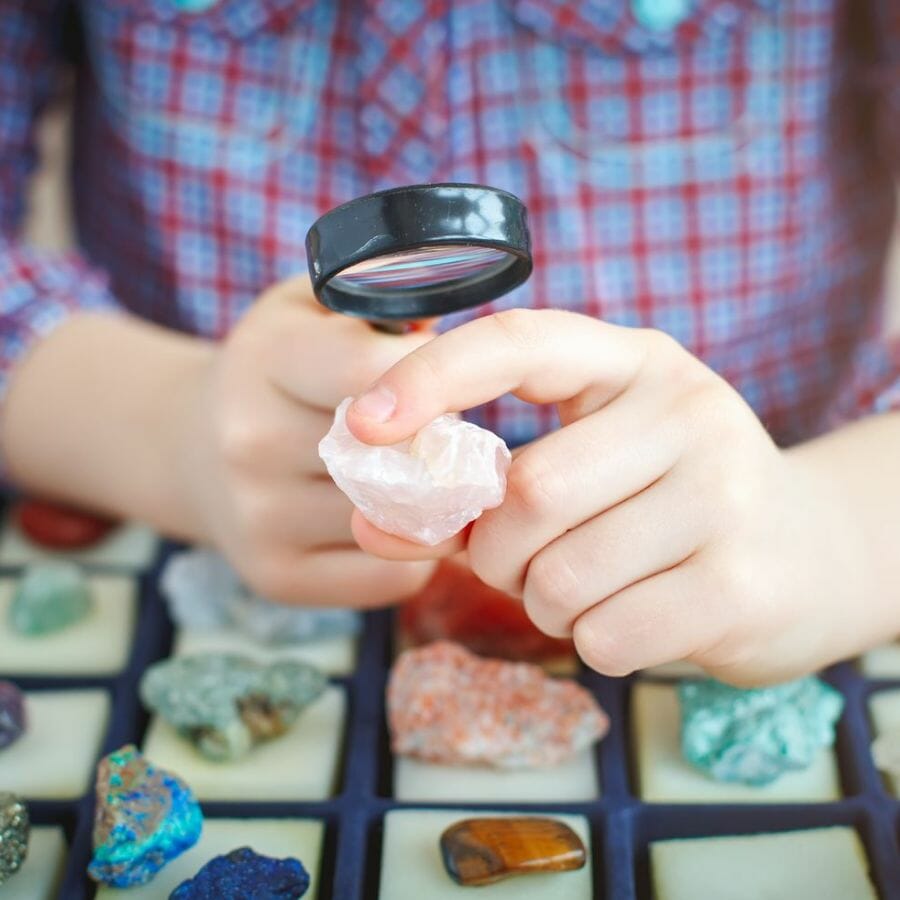
Look at the specimen’s color or any patterns and structures. Please take note of any unique features that could help you identify them. Make you have sufficient lighting to see the colors accurately. Natural daylight or a well-lit area with white light is preferable.
Look closely at the specimen and note the color that stands out the most. Think about whether it looks like a single color or if there are different shades or other hues.
Take a photo of the specimen’s color and describe it as well as you can. Use words like “red,” “blue-green,” or “yellow-brown” to accurately describe the color.
Assess the hardness
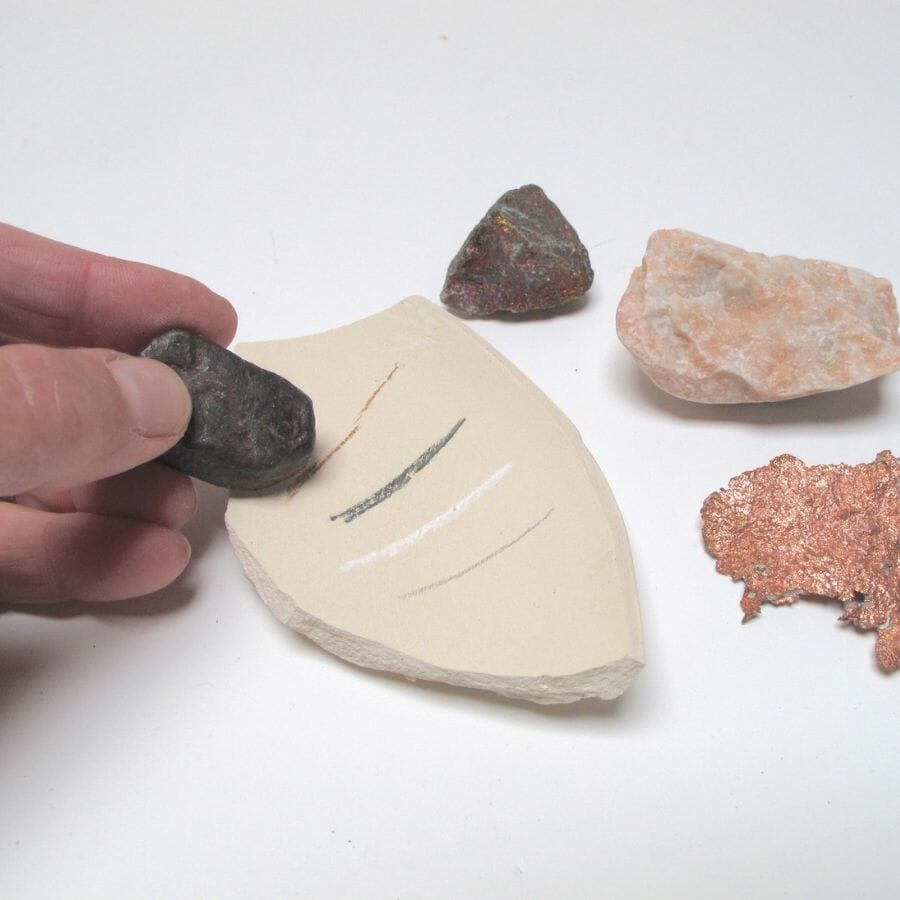
The Mohs scale is a common way to compare how hard something is. It comprises a group of minerals whose hardnesses range from 1 (the softest) to 10 (the hardest). Start by comparing the hardness of your specimen to these minerals to get an idea of its hardness range.
You can also do a scratch test to assess its hardness. Choose a common material with a known hardness, like your fingernail (2.5), a copper penny (3.5), a steel knife blade (5.5), or a piece of glass (6).
Try gently scratching the sample’s surface with the material and watch what happens. If the material scratches the sample, the specimen is less hard than the material used.
Conduct a streak test
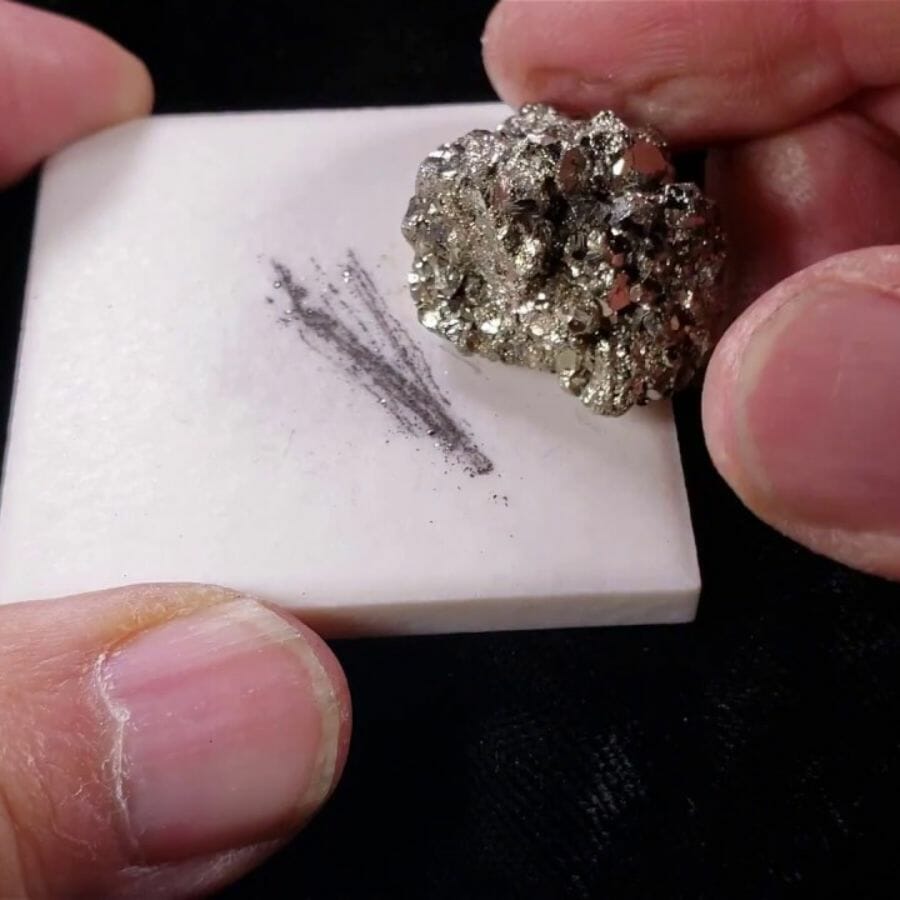
A streak test is a way to find out what color a mineral is when it’s in powder form. To make a streak, the sample is rubbed against a streak plate, an unglazed porcelain tile.
This test can help determine what kind of mineral it is, especially if the color of the streak is different from the color of the mineral itself.
Find a part of the flat specimen that the weather hasn’t damaged. You can use a hammer or another tool to crush a small amount of the mineral into a fine powder if necessary.
Check out what color is left on the streak plate. This color is the mineral’s streak color. It might not be the same color as what you can see on the specimen.
By doing a streak test, you can learn important things that will help you figure out what kind of rock, gem, or mineral it is.
Research local geology
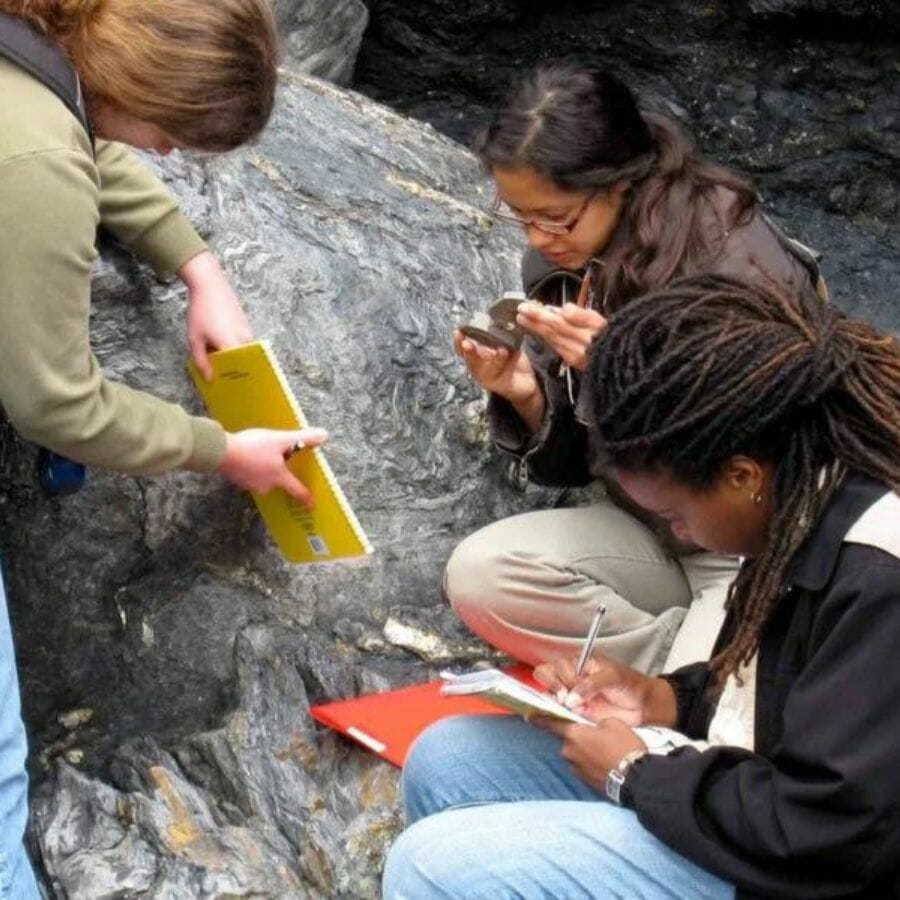
By doing thorough research on the geology of your area, you can get helpful information and references that will help you figure out what rocks, gems, and minerals are in your area.
Check with government agencies or geological societies that have surveyed your area. These surveys usually tell you about the area’s types of rocks, minerals, and geological formations.
Explore field guides or books about your area’s rocks and minerals. Most of the time, these resources have detailed descriptions and pictures of rocks, gems, and minerals found in the area. This can help you match your specimen to known ones.
Utilize reliable resources
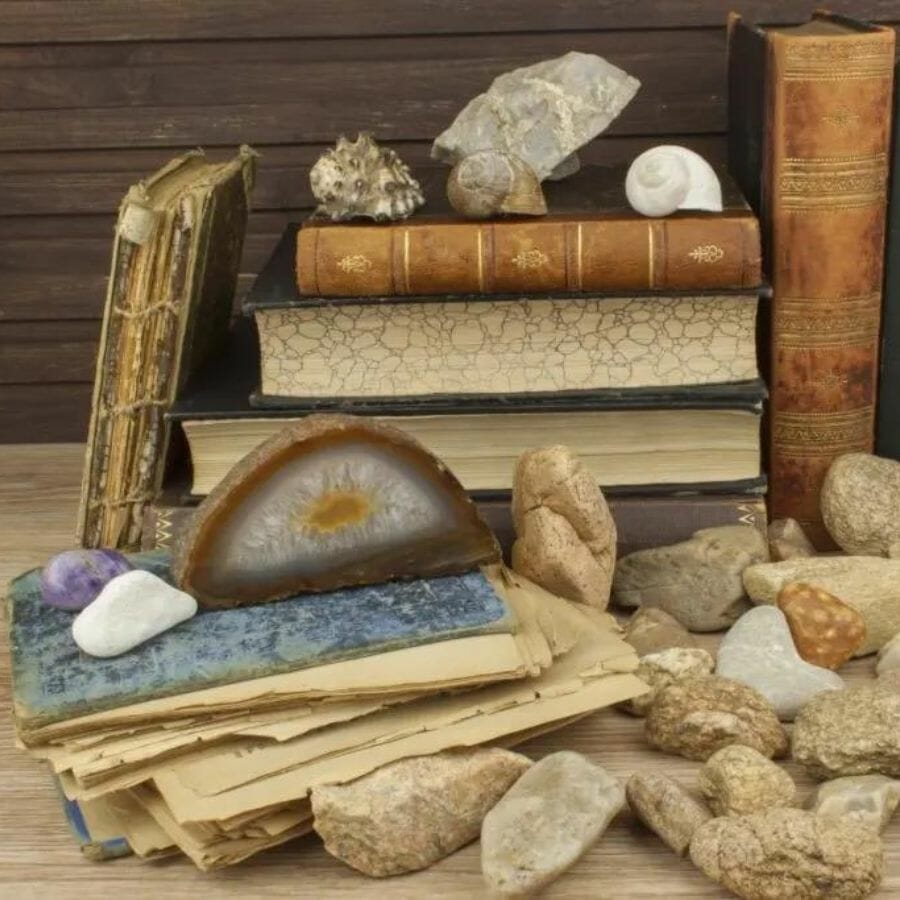
Remember that it can be hard to tell what rocks, gems, and minerals are and that expertise comes from experience and learning more. For accurate identification and to learn more about the field of mineralogy, it’s essential to use reliable and trustworthy sources.
Look at reputable mineral identification websites and online databases. Good places to start are the websites of geological organizations, mineral museums, and educational institutions.
Check out mineral museums or exhibits that have rocks, gems, and minerals on display. Museums often have interesting displays, educational materials, and staff who know their stuff and can help you figure out what you’re looking at or direct your research.
If you aren’t sure how to identify it, ask professional mineralogists, geologists, or collectors for help. They can give advice and tips based on what they know and have done.

